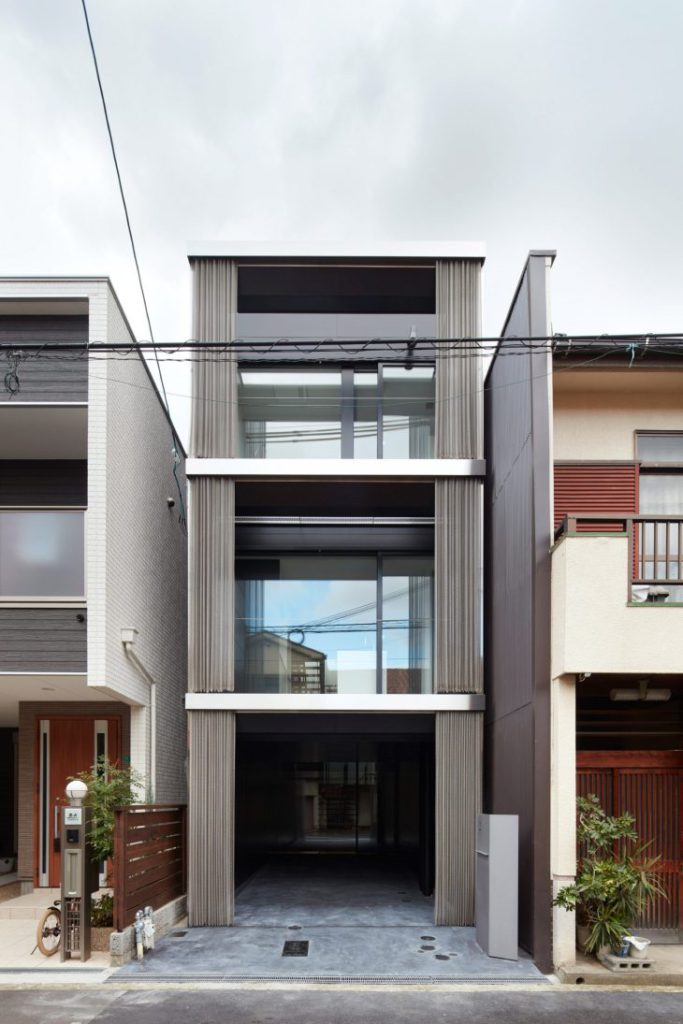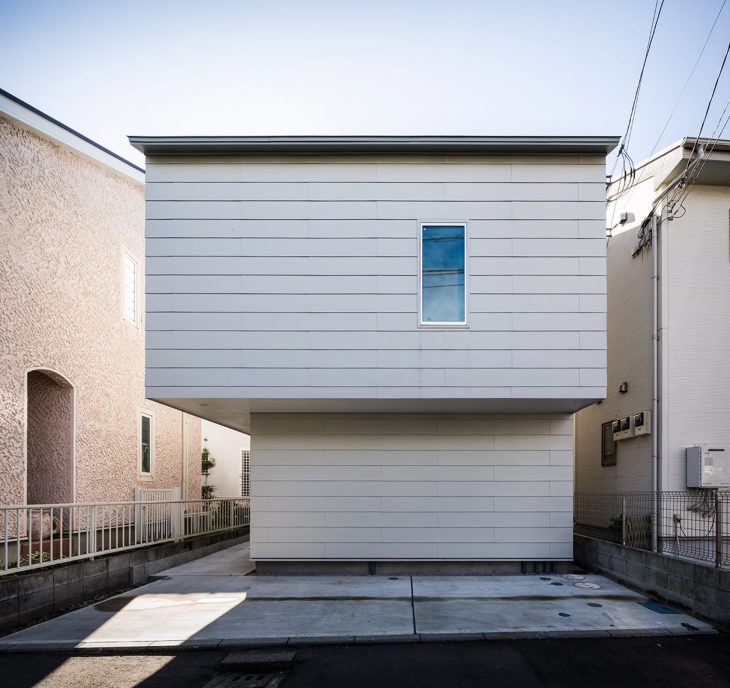I am not an Architecture graduate, but when I was in art school, names like Tadao Ando, Sou Fujimoto and Kengo Kuma are familiar, commonly cited sources of inspiration in the process journals of my course mates. Japanese Architecture and its associated minimalism is revered and fetishised by students and tutors alike; I remember a Welsh tutor of ours loved the work of Tadao Ando so much he made his interior design students create work that only resembled Ando’s and to only use him as inspiration.

Scrolling through popular online magazines like Dezeen and ArchDaily, Instagram and Pinterest, ideal Japanese architecture seems to be characterised by space, a neutral colour palette, wooden design elements to lend warmth, unusual roof designs and building shapes, I began to wonder, why are so many buildings in Japan so beautifully bizarre?
Of course, before you go: “but there are soo many drab and ugly prefab “manshon” in Japan!”, yes you are right, but Japan is also famous for its radically different, to the point of impractical houses.
Now that I work at Dualtap, where our focus is to keep the value of buildings as long as possible, housing that showcase the individualism of the owners are probably a real estate agent’s worst nightmare to sell, and coming from Singapore, where the resale market is very healthy and housing is seen as an asset, a house with only windows but no walls seem to more like a second home for a crazy and rich exhibitionist, good luck finding a buyer like that.

1.Weak Resale Market
But as you might know, Japan has a weak resale market, and that gives us the first clue to a contributor of form to Japanese architecture. Buildings depreciate to very little value, if not zero, after 25 years, unlike the land it stands on. This has created a vicious cycle houses of buildings being cleared after a few decades even though the structure might still be completely sound.
2. Revisions to Earthquake Safety Standards
Earthquake related inquiries are the most common ones we get from investors and customers. Japan has one of the most stringent anti-earthquake standards, and one that also goes through constant revisions especially after major, devastating earthquakes. This means that older houses take on the unfortunate and somewhat untrue image that it is unsafe and therefore needs to be torn down.
3.Historical Reasons
In addition to the first two points, right after World War Two, Japan needed housing fast, and in the rush to rebuild, out spawned many cheap, poorly built, wooden frame houses. Such homes are usually worthless in terms of investment value, so rather than maintain or upgrade it, many were torn down.
While most homes are built with higher quality materials and with much better safety standards, perhaps it is the perception of older buildings with older anti-earthquake safety codes as being more unsafe that this phenomenon for the demand of new houses.
This way of thinking about real estate economics is slightly counter intuitive as old houses in Singapore do retain their value and in some cases be more expensive than the new, especially buildings with historical value, like shophouses.

4. Architects in Japan have creative freedom
With Japan’s weak resale market, lack of regulations as to how a building should look, fast depreciation rates, architects have to service an appetite for new homes. Because home owners don’t really have to think about selling their homes to someone else in the future, each client’s individual tastes and preferences can become a reality. Architects themselves, with so much competition, have to stand out.
This, coupled with lack of regulations for aesthetics by local governments may help to contribute the myriad of bizarre, avant-garde housing.
5. Cultural Factors?
Perhaps the above factors has then contributed to a mentality in the Japanese that a house, rather than a real estate, is more of a disposable good like a car. The expectation that things are ephemeral may thus be present in the minds of wider Japanese society.

Problems with disposable-housings attitude
Firstly, with so much demolition going on, one would expect a huge amount of construction waste and rubble.
And while in the short term, all this building and selling may be good business for construction workers, people are not building wealth upon wealth when buildings depreciate. There is no incentive for home owners to maintain the house when the value is dropping.
Value Depreciation of housing in Japan is I think somewhat arbitrarily defined, wooden structures will be pretty much worthless after 22 years, brick 38 years and concrete after 47 years. This is in spite of good quality materials used in construction for buildings.
Things are changing
As though recognising the waste in the low second hand housing sales, which is only 14.7% in 2013, the Japanese Government had aimed to increase second hand sales to 23% by 2016, however, without proper incentives for homeowners such as change in appraisal of value and fundamental mindsets of seeing housing as a disposable good.
How to choose an investment real estate in Japan that retains its value
- Within 5 minutes walk from the train station
- The train station also matters. Stations that offers access to multiple lines and to popular destinations will be more valuable
- The type of ground: Reclaimed land and bedrock makes a difference.
- The surrounding area
- Historically valuable neighbourhoods, such as Akasaka and Minami Aoyama in Minato-ku, Shoto in Shibya-ku and Ichigaya in Shinjuku-ku
- South Facing, so the unit/house gets plenty of natural light
- Higher floors
- Views that are unobstructed by other buildings and also unlikely to be blocked in the future. Apartments fronting parks, universities, temples and shrines will be less likely to lose their views.
To read more about resale market economics in Japan, visit this good article from Freakonomics.